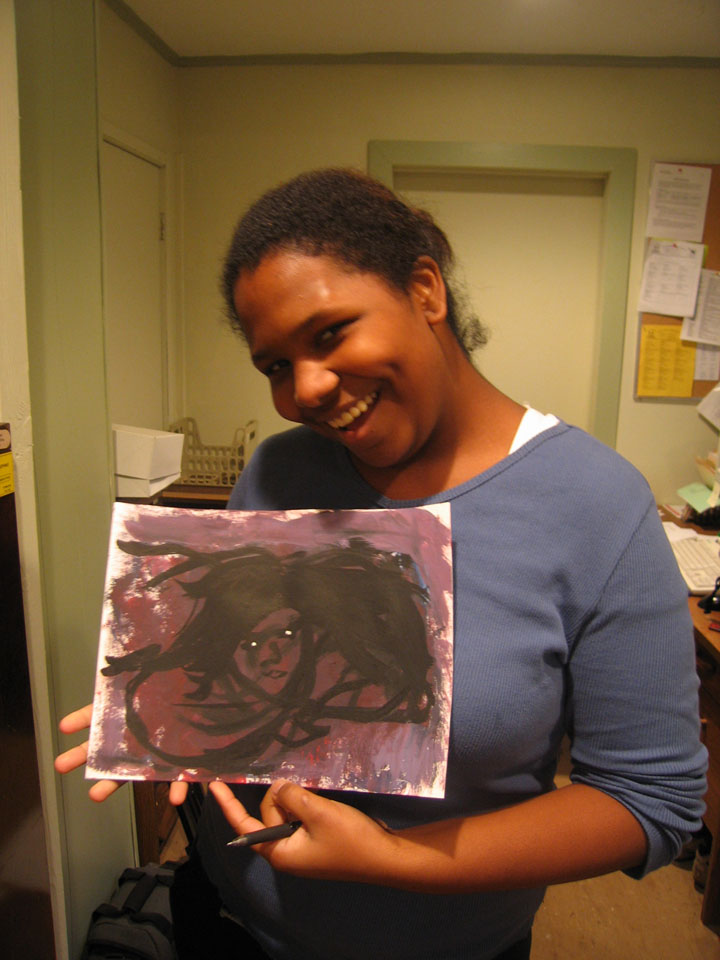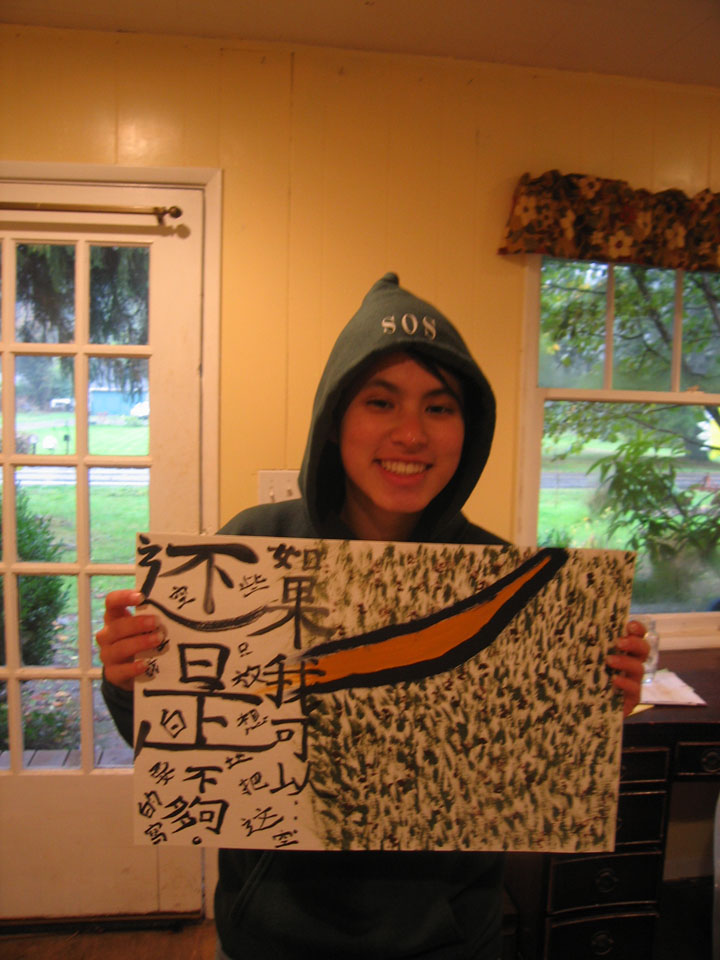Curriculum Work
Art Therapy
Lesson plan for Nov. 5th, 2005. 11:00-12:15
By Rebecca Townsend, for GruB
What to Bring:
? Cardboard, canvas, wood, gesso, etc., for painting.
? Radio and music (Miles Davis): for vibe
? A variety of paintbrushes
? A variety of papers, including hard stock for painting
? Paints: for the first time: acrylics
? Paint trays
? Japanese ink/brushes
? Straws for blowing
? Cups or jars: for water
? Pencils, graphite and colored, and erasers
? Oil pastels
? Pens and markers
? Books and images
? Rags/drop cloths/newspapers
? Tape to hang art
? Camera: for documentation
For who: A group of 10 youth, in their junior and senior years of high
school.
Foreseeable challenges:
? The youth having judgments or fear of them, in themselves and of others.
? Time: wanting more time to make art and process
Text:
? Art Heals, by Shaun McNiff
? The Secret World of Drawings, by Gregg Furth
Set up:
o Sweep and move stuff
o Work spaces with drop cloths, if needed
o Demonstration table, with all supplies available
o Radio and music playing
Lesson plan:
? 5 min: Demonstration: pen and paint, techniques
? 10 min: Introduction
o “Art Therapy,” talk about the concept and personal experience
o Objective: Learn another expression of the tumultuous internal self
o Let go, without expectation
? Just move…If you find it difficult to act creatively it’s
because you’re trying to do too much…trying to be in a place
other than where you are at that moment, expecting something other than
what you are doing, or thinking what you’re doing is not ‘good
enough.’ Don’t think, just move” (McNiff 156-157).
? It doesn’t have to mean anything. Sometimes it’s just the
act of creating, shifting consciousness from mental lists and judgments
and labels.
? There are no standards or expectations
o Safe, supportive space, without judgment or criticism, of self or
others
o Introduce tools/care and techniques
? Exercises:
o 5 min: Warm up: Blind contour
o 25 min: Creative flow
? Ideas:
o Portrait of Self
o Pen vs. paint
o Big vs. small
o If there are follow ups:
? Contour
? Still life
? Images
? Collage
? 15 min: Processing
o Safe Space!
o Sharing art and emotions.
o Questions/comments?
? 5 min: Conclusion
o Tension and conflict are necessary tools in creation and new growth.
Certain things need to break down to achieve renewal. This also applies
to making art.
o If relevant: Being open to threatening images
? “When we are stunned or disturbed by images, try viewing it as
a figure trying to get our attention…the more we avoid or deny
a problematic feeling, the greater it’s power becomes…one
must respect the role of this tension, rather than repress it…transformation
happens when we open to the expression of an image and do our best to
be present with it, understand it, and accept it, rather than attempting
to fix it, resolve it, or eradicate it (Mcniff 97-98).
? Read about the wound, pg. 113.
? Announcements:
o Where to get stuff they want…
o Painted Word Art Show, submission by Nov. 28th. Email Abby: ricabi18@evergreen.edu
? 10 min: Clean up
Evaluation:
What stood out for me most was Ebony’s reminder that they might want to share their work, Brianna’s seeming lack of interest followed by her comments “I don’t want it to end!” and, “I haven’t painted since kindergarten.” Josue’s excitement and explanation of the work he had done; and Esther’s serious interest in the whole affair. What I would do differently: I would like to spend a more time introducing the materials and techniques in the beginning, and more time for processing and reflecting in the end. They liked looking at photos of my paintings; I would allow more of a space for that along with other works. I would cut out everything after the first point (“tension…”) in the conclusion; it was too much and didn’t seem relevant at so early a stage.
“Rebecca’s Art Therapy lesson was a hit. She did a good job planning for it; we met and discussed the time/space limitations along with how to present the subject matter. She did a great job with her actual presentation. She did a good job balancing lecture with interactive work. The youth were very responsivee to a fairly new concept. For future lessons I would suggest the same format but using less jargon and large words since many of the youth did not always know these words but did not ask, so having “age specific” language. Aside from that the only other suggestion would be to allow more time for reflection. For her first lesson on Art Therapy it was great, and the youth all loved it. We were glad to have her here to teach.” –Allyson M.